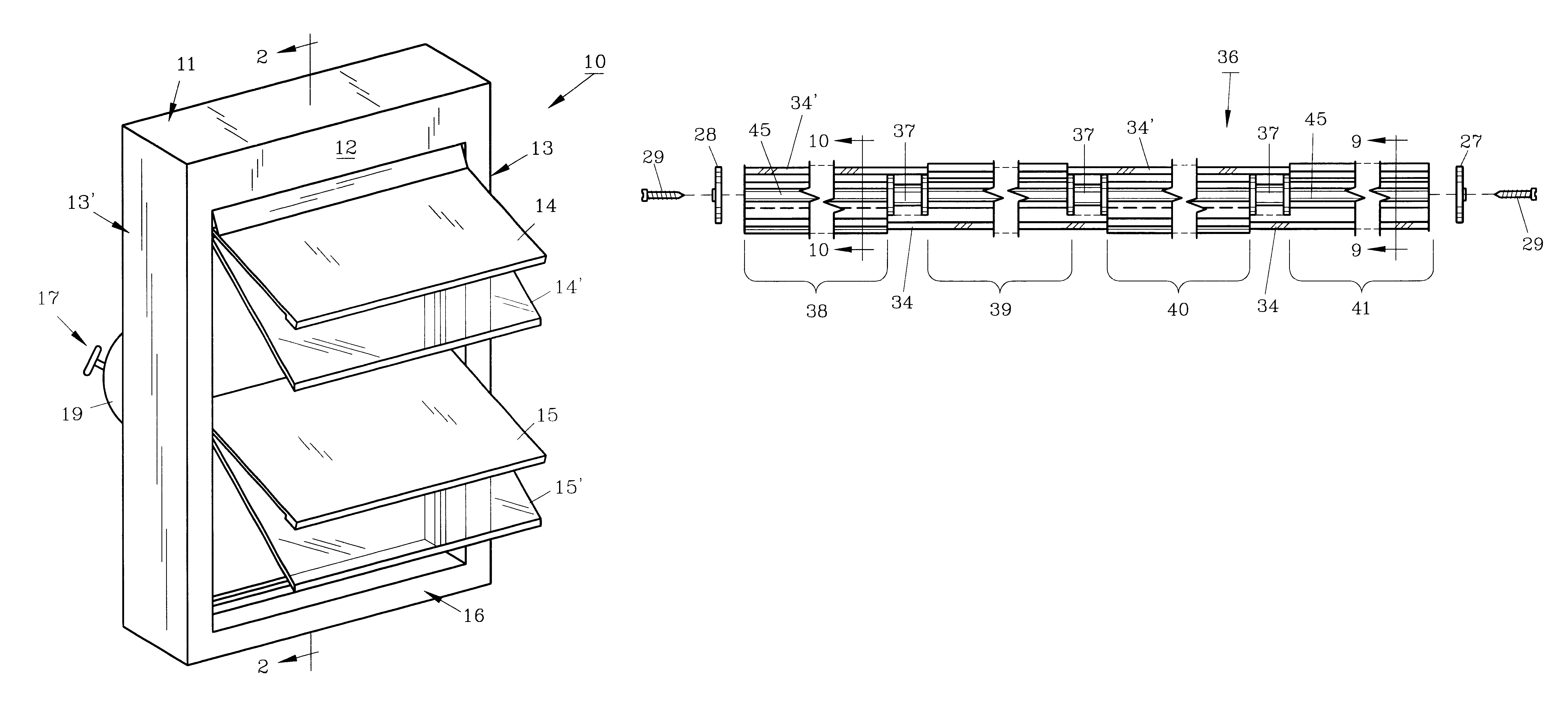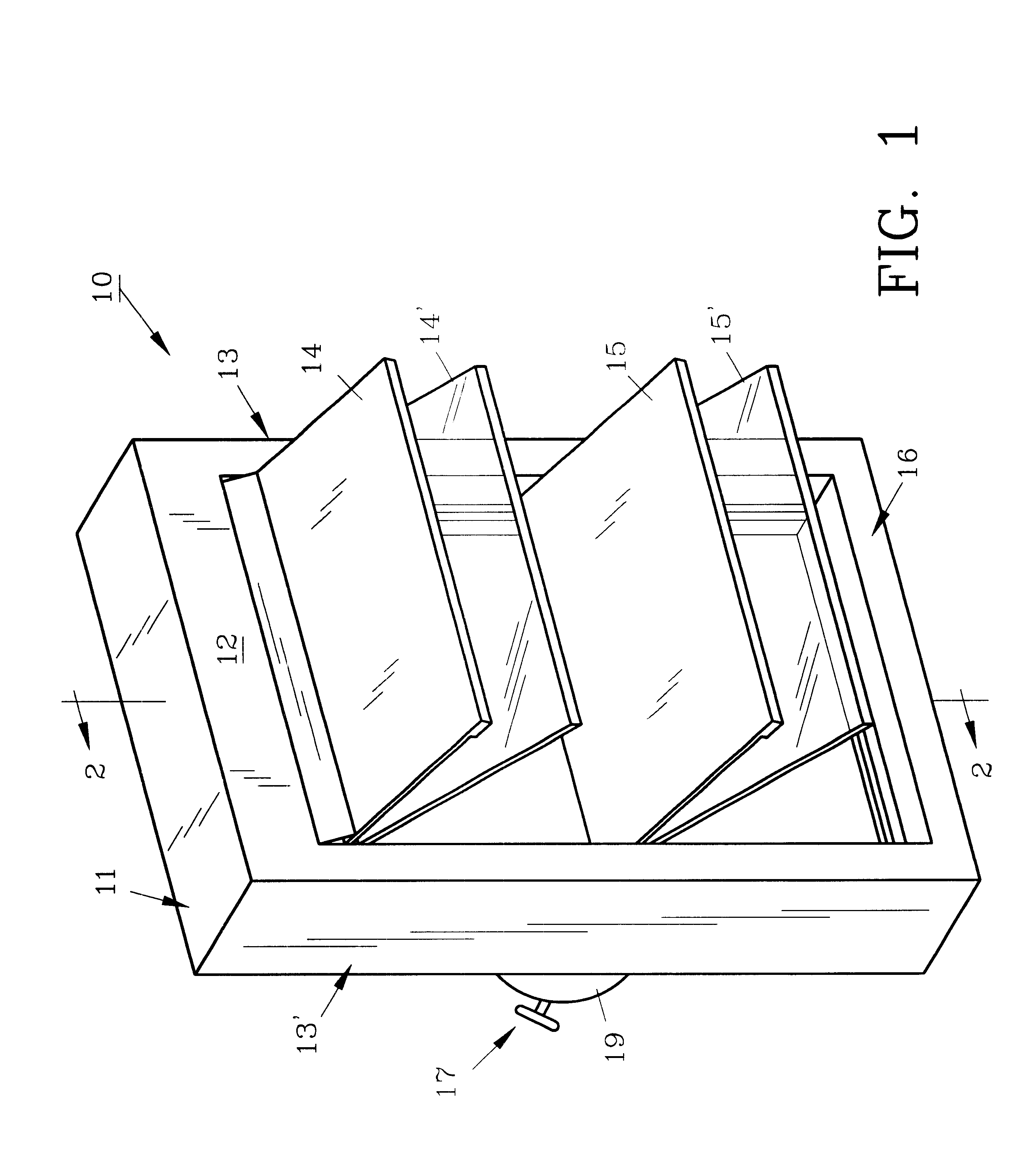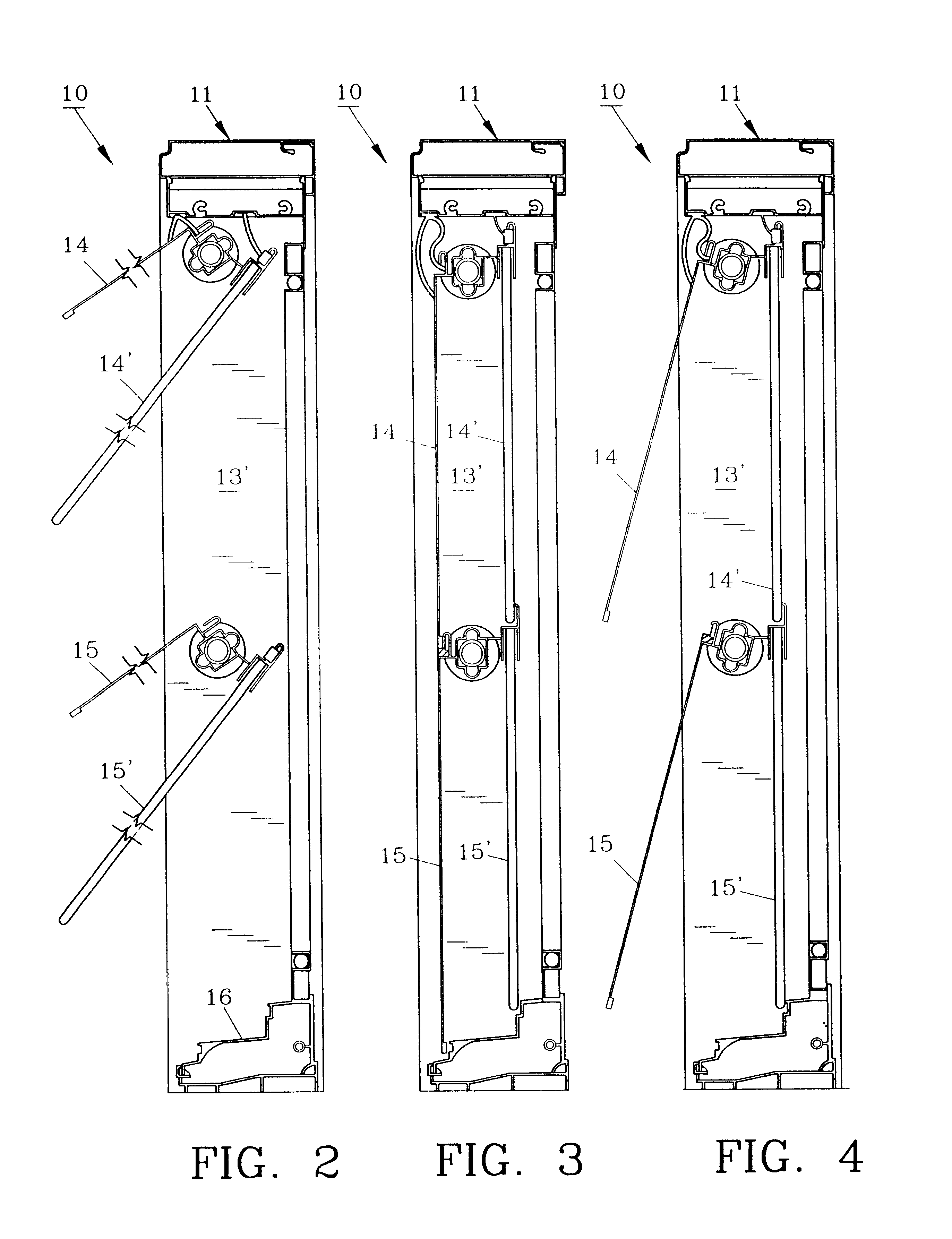Dual panel jalousie assembly with independent panel movement
- Summary
- Abstract
- Description
- Claims
- Application Information
AI Technical Summary
Benefits of technology
Problems solved by technology
Method used
Image
Examples
Embodiment Construction
For a better understanding of the invention and its operation, turning now to the drawings, FIG. 1 demonstrates the preferred jalousie assembly 10 used in a conventional jalousie or awning window which includes frame 11 with header 12, jambs 13, 13' and sill 16. Tandem panel pairs 14, 14' and 15, 15' are pivotally joined to window frame 11. As shown front panels 14 and 15 are opaque, being formed of aluminum or other suitable materials. Rear panels 14' and 15' are glass as are usual in jalousie type windows and doors. As will be hereinafter explained in more detail, front panels 14 and 15 are independently operated from rear panels 14' and 15' and can be opened and closed as required. Front aluminum panels 14 and 15 are simultaneously operated by handle 17 of standard operator 19 whereas rear glass panels 14' and 15' are operated by handle 18 (FIGS. 11 and 12) positioned on jamb 13. While only two pairs of aluminum and glass panels are shown in FIG. 1, similar jalousie assemblies co...
PUM
 Login to View More
Login to View More Abstract
Description
Claims
Application Information
 Login to View More
Login to View More - R&D
- Intellectual Property
- Life Sciences
- Materials
- Tech Scout
- Unparalleled Data Quality
- Higher Quality Content
- 60% Fewer Hallucinations
Browse by: Latest US Patents, China's latest patents, Technical Efficacy Thesaurus, Application Domain, Technology Topic, Popular Technical Reports.
© 2025 PatSnap. All rights reserved.Legal|Privacy policy|Modern Slavery Act Transparency Statement|Sitemap|About US| Contact US: help@patsnap.com



